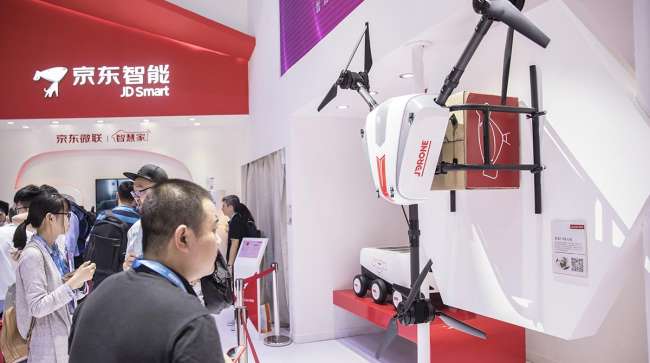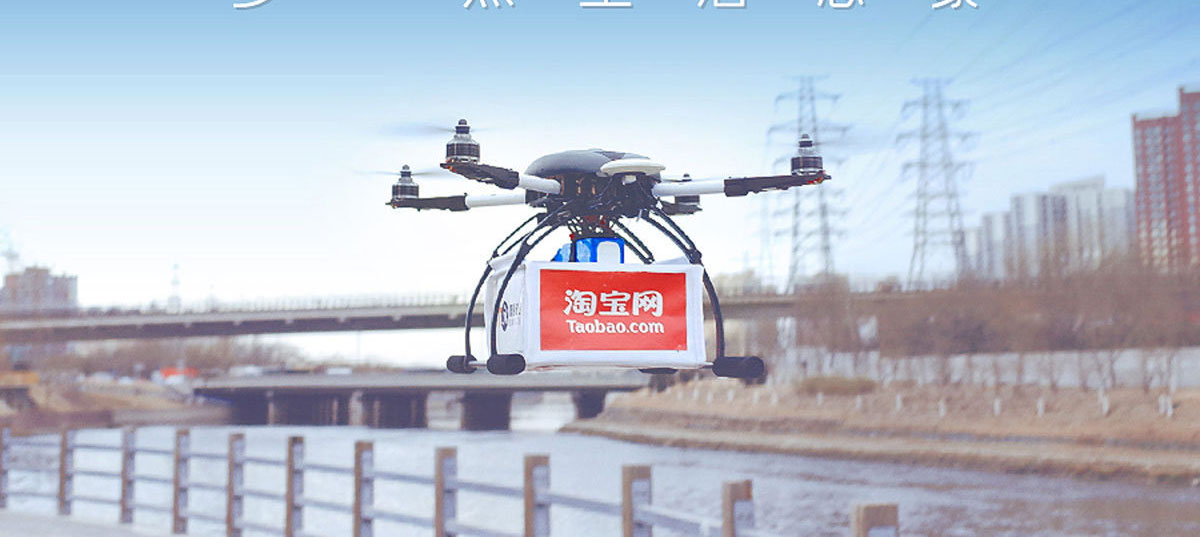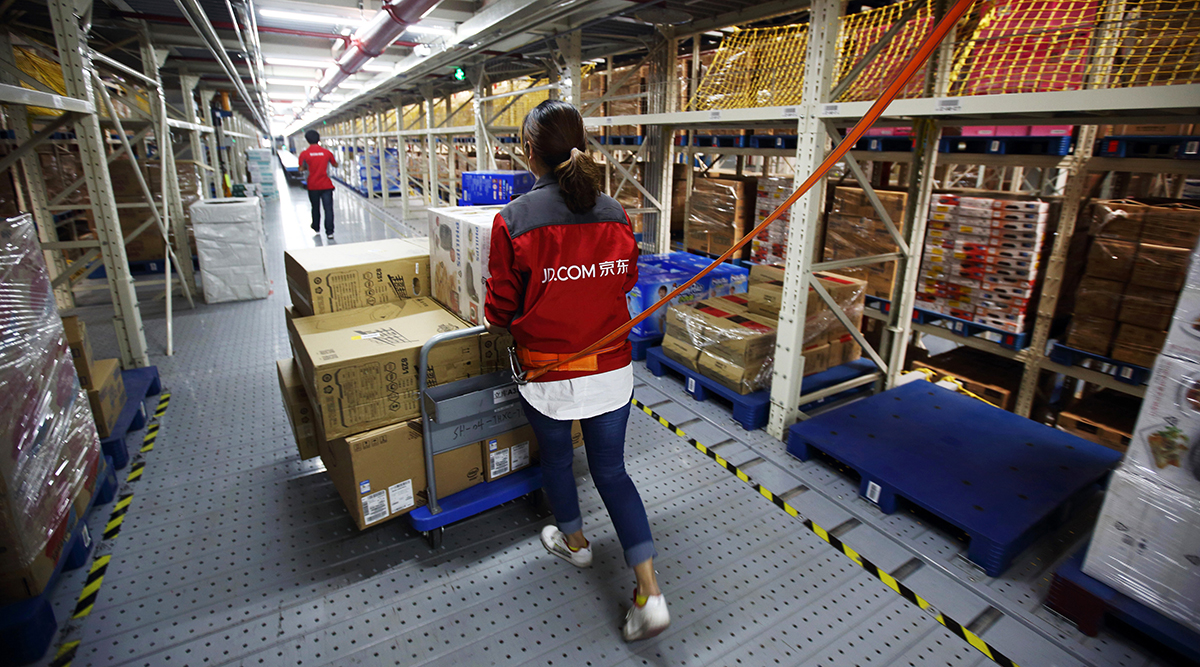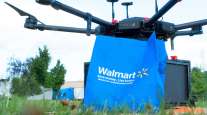Drone Deliveries Become Reality as China Races to Take the Lead

The day after Chinese e-commerce giant JD.com Inc.’s midyear sale, a company drone took off from a playground in the city of Xi’an to deliver one of the orders in a football-sized box to a village in the mountains to the south.
The six-rotor craft is one of about 40 JD.com designed to cut delivery times for items such as smartphones and food to remote areas where land transport is too expensive or slow.
JD.com is racing companies from across the world to develop unmanned aerial vehicles with the strength, range and reliability to deliver goods on a large scale and solve the expensive “last-mile” problem for couriers. What sets China’s efforts apart is its ability to assemble all the other parts needed for drone deliveries, including the regulations, infrastructure and the world’s biggest e-commerce market.
And to make all those work together, it needs data.
So last year, the Civil Aviation Administration of China (CAAC) gave the go-ahead for JD.com and SF Holding Co., the country’s biggest express-delivery company, to start sending packages by drone in certain rural areas.
RELATED: Chinese delivery company gets approval for drone deliveries
The idea is to build a network that includes not only small drones for final delivery, but a whole system, including large autonomous fixed-wing planes that take off from small airports or landing strips to ferry bulk shipments between warehouses.
China’s killer advantage is the market. The country has both the advanced drone technologies and millions of consumers living in remote areas that are hard to get to — sometimes impossible to get to — by truck. China had more than 590 million “rural” residents at the end of 2017, according to the statistics bureau.

Alibaba
RELATED: Alibaba rival JD envisions its own delivery drone fleet in China by end of 2017
“People living in mountainous regions hardly accessible by ground transportation also have the right to shop!” said Cui Zheng, a manager overseeing JD’s drones program in northwest China. “We are giving them the same shopping experience, same price, by flying drones.”
The race for drone deliveries in China is being fueled by competition between JD.com and rival Alibaba. Alibaba’s lighter business model means it relies on partners to make deliveries, but its logistics division Cainiao has partnered with Beihang Unmanned Aircraft System to develop cargo drones.
RELATED: Flytrex provides drones for grocery delivery in Iceland
One model being worked on by the drone company is capable of carrying a ton of goods more than 1,500 kilometers. Ele.me, Alibaba’s food delivery arm, gained approval in May to test drones in a large industrial zone.
In the U.S., the Department of Transportation in May selected 10 state, local and tribal governments to test commercial drones in partnership with companies including Intel Corp., Uber Technologies Inc. and Qualcomm Inc. One company not listed in the trial was Amazon.com Inc., whose Prime Air unit is a leader in drone delivery development. Amazon has been testing drone deliveries in the U.K. since 2016.
Drone use by JD.com and SF is still only a tiny fraction of their operations, but for the Chinese government, the technology offers a way to help alleviate poverty in rural areas and narrow the wealth gap with urban centers. It could also make China a model for other governments looking to draft regulations for the coming swarms of civil drones.
RELATED: Drone deliveries ready to soar in Japan, but issues linger
This is “a key opportunity for CAAC to gain a greater say in international aviation industry and overtake peers,” the civil aviation administration said in a written response to Bloomberg News.
JD.com, which has clocked over 5,000 hours of drone flight time, said parcel delivery costs in rural backwaters can be five times as much as in cities. Neither JD.com nor SF would say how much could be saved by flying drones, but they expect costs to be less than those with human delivery once the technology is ready for widescale use.
In one extreme case, a courier has to climb up and down a mountain for four hours to deliver a package to a village on the edge of a cliff, said Cui. A drone can do the trip in minutes.
SF aims to integrate the small last-hop flights with bigger drones relaying goods to distribution centers and traditional cargo planes, to reach a goal of ensuring all deliveries within China are completed in less than 36 hours.
“Drones flying one or two tons of goods on regional routes could bring down transportation costs in underdeveloped areas to a level similar to ground transportation on trunk routes,” said Li Dongqi, a group vice president responsible for drone operations at SF.

A worker collects packages on a trolley at a JD.com Inc. warehouse in Shanghai. (Tomohiro Ohsumi/Bloomberg News)
Fixed-wing drones would typically operate from small airports used by helicopters, light aircraft and private jets, or from purpose-built landing strips at company warehouses.
RELATED: Amazon rival JD.com built the equivalent of Monaco in warehouse space in three months
JD launched its first fixed-wing drone during its annual midyear shopping bonanza on June 18 and will use it to fly time-sensitive, high value-added goods. SF has been test-flying similar models since last year.
Governments in other countries are also developing rules, but huge challenges remain. In the U.S., regulators are trying to address how to create a low-level air-traffic system to ensure drones don’t hit each other or traditional aircraft.
Other problems include a standard for communicating with the craft, safety and privacy concerns.
Even in China, the CAAC doesn’t allow drones to fly at night, in the rain or in more than a light breeze.
With assistance from Dong Lyu, David Ramli and Alan Levin.


